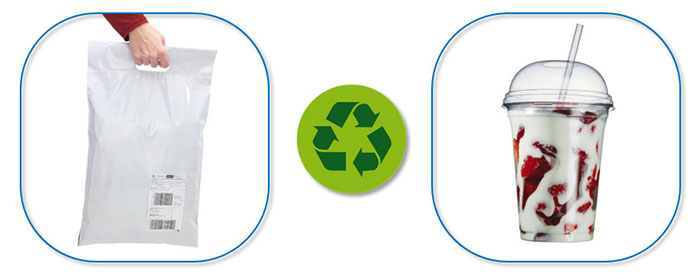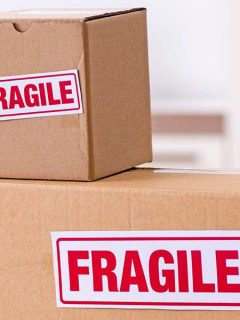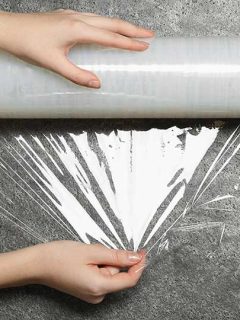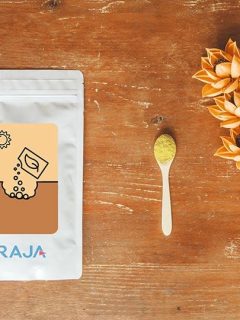What kinds of packaging are around you: certainly plastic, wood, cardboard, metal, etc.? Is one better for the environment than the other? To find out, you need to determine what makes a package “environmentally friendly.” Fortunately for you, you don’t have to look very far to get an answer to this question. Just read on.
The 5 R’s for environmentally friendly packaging
[Before we start, we would like to make an important point: every packaging itself implies sustainability. Because thanks to a packaging
..
- a (fresh) product lasts longer,
- a product is better protected against damage during transport.
the packaging itself is therefore a source of sustainability. However, the question now is how to package, and with what.

► 1. Reduce
Packaging can be described as ‘green’ when it is light and/or compact.It reduces the amount of material used and reduces CO2 emissions, as other parcels can be sent at the same time by a courier company, for example.It is also to be expected that courier services will take more account
of
the volume of a parcel rather than its weight in the future.This will then result in a recalculation of shipping costs.Until the decision is made, here are some examples of compact packaging solutions:
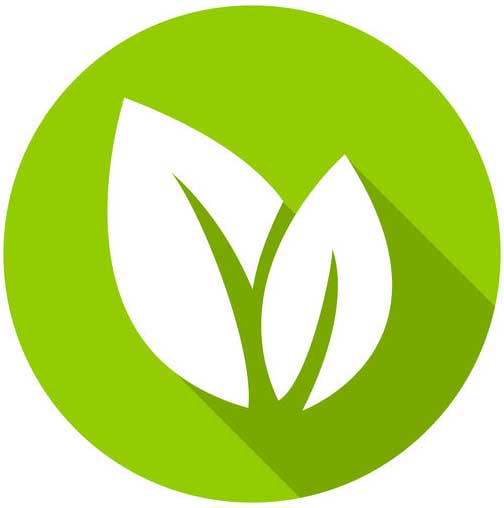 variable height crate
variable height crate
The variable height crate is unique in that it has flaps with grooves. These can be cut and folded every 1 or 2.5 cm. This makes it easy to adapt the crate to the size of the product. This is particularly useful if you are shipping products that differ slightly in size. The result is more compact crates with less padding and less tape.
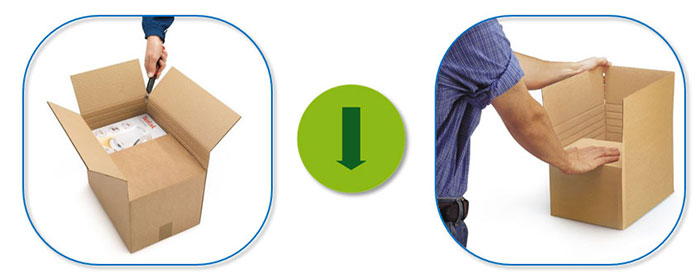
 customised packaging
customised packaging
The most effective way to keep packaging compact is to make it fit your product. Of course, there are simple solutions to this problem. For example, we have specific packaging for bottles, books or clothing. These fit your product perfectly and often do not require additional cushioning.
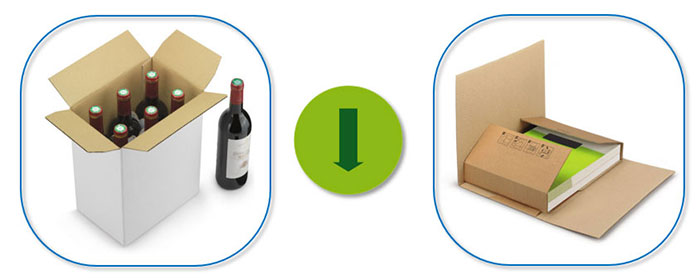
► 2. Reuse
Sustainability is often mentioned along with reusability.Packaging is reusable when you can give it a new life, in its original state, preferably as often as possible.Not as many copies of a reusable package need to be made as a disposable.As a result, we need fewer raw materials and therefore produce less waste.In other words, reusable products are the least harmful to the environment.Some examples are given below:
 polypropylene woven bag
polypropylene woven bag
The EU directive 2015/720 states that plastic bags must be reusable.To be reusable, a plastic bag must be at least 50 microns thick.Therefore, the lightweight bags a consumer used to get at the supermarket are already disappearing from the streets.A good eco-friendly alternative to these bags is the woven polypropylene bag.It is extremely strong and can be reused up to 400 times.Other strong bags are available in polyester, hessian or cotton.
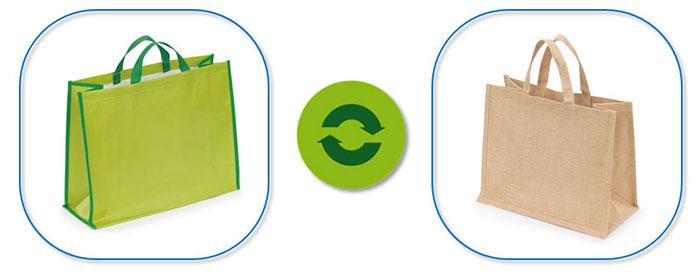
 shuttle bin and plastic pallet
shuttle bin and plastic pallet
Il y a tellement de façons de transporter vos marchandises… L’une des meilleures solutions réutilisables est le bac navette. Il est principalement utilisé par les entreprises qui veulent expédier leurs produits “en interne”, c’est-à-dire depuis et vers leurs magasins ou autres succursales. Le bac navette est en polypropylène. Cela le rend non seulement solide, mais aussi léger. Une fois déchargés, les bacs peuvent être insérés les uns dans les autres de façon à ce qu’ils ne prennent qu’un minimum de place.
Un autre exemple est la palette en plastique. Elle peut aussi facilement être réutilisée un plus grand nombre de fois, contrairement aux variantes en carton ou en fibre de bois. Elle est également beaucoup plus légère que les palettes en bois standard. Cela équivaut à une réduction des émissions de CO2 pendant le transport.
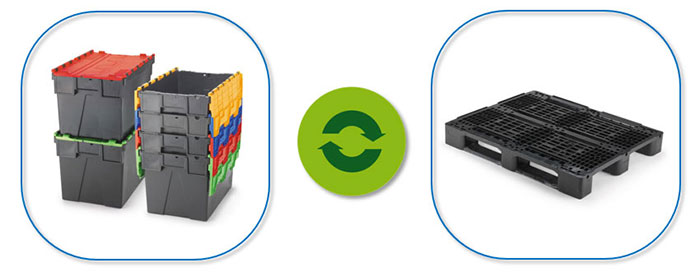
► 3. Replace
Thirdly, we need to be aware that there is an environmentally friendly alternative for almost all packaging. These can be fully or partially recyclable products, made from recycled materials or renewable raw materials. Some examples
of increasingly
popular alternatives are:



► 4. Renew
Renewable packaging is made from raw materials that are 100% organic in origin.They are “renewable” because nature can continue to provide them to us almost indefinitely.Well-known examples are paper and cardboard.Thanks to sustainable forest management, wood (the raw material for paper) can be renewed indefinitely.Other examples of these renewable sources are:
 bamboo and vegetable starch
bamboo and vegetable starch
[
Bamboo or starch is often used as an alternative to disposable plastics. These materials decompose naturally and easily in the environment due to their plant origin. The most frequently used applications are pea-based cushioning particles or potato starch-based air cushions.
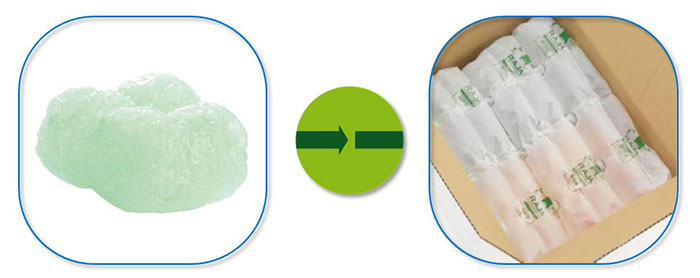
 bioplastics
bioplastics
Bioplastics comply with the European standard EN16575 and are wholly or partly made from biomass. The properties of bioplastics have improved considerably in recent years and can compete with conventional plastics in terms of flexibility, printability, transparency, etc
.
One well-known form of bioplastic is PLA (polylactic acid). This is a transparent material suitable for packaging and is made mainly from cornstarch. It is used, among other things, to make cutlery, crockery, and as a lining for cardboard cups.
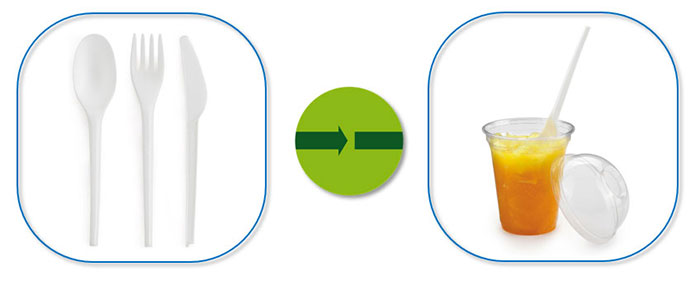
► 5. Recycle
A final factor that can determine the ‘green’ function of a package is the extent to which it can be recycled.The importance of recycling is also reflected in EU policy.It aims for a circular economy: today’s waste should become tomorrow’s raw materials.
If you want to recycle, you have to sort first.In order to make this process easier for the consumer, it is advisable to package with mono-materials.This means that you use one type of raw material for all parts of the package (= paper, plastic, glass, wood etc.).Everything can end up in one sorting cycle at once.Here are some concrete examples:-
 paper or cardboard packaging
paper or cardboard packaging
Paper and cardboard are the most recycled materials in Europe. In Belgium, it is estimated that up to 90% of paper and cardboard is collected for recycling. Packaging with paper as the mono-material could look like this:
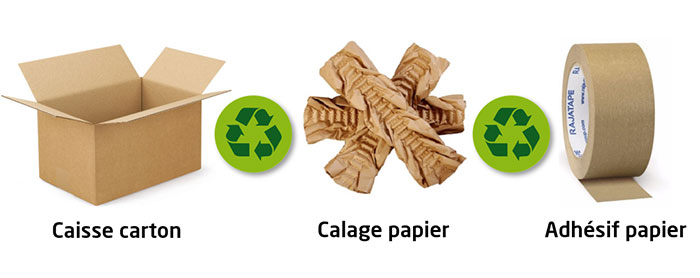
 plastic packaging
plastic packaging
Pour certaines applications, il est préférable et plus écologique de choisir un emballage entièrement en plastique. Le plastique est facile à recycler. C’est quelque chose qui fait déjà l’objet d’un bon suivi dans les entreprises. Si vous souhaitez utiliser le plastique comme mono-matière, vous vous retrouverez bientôt dans des sacs d’expédition, des gobelets, etc. Combinez-vous différents types de plastique dans un même emballage ? Veuillez à ce que les pièces soient faciles à séparer. Les différents types de plastiques nécessitent souvent des procédés de recyclage différents.
